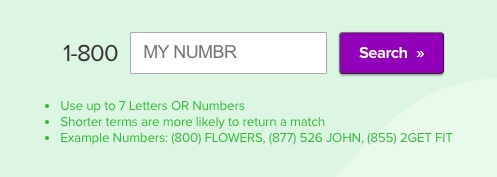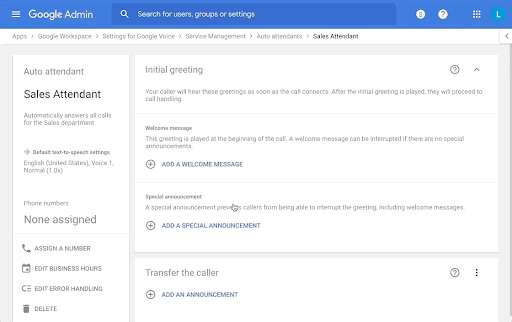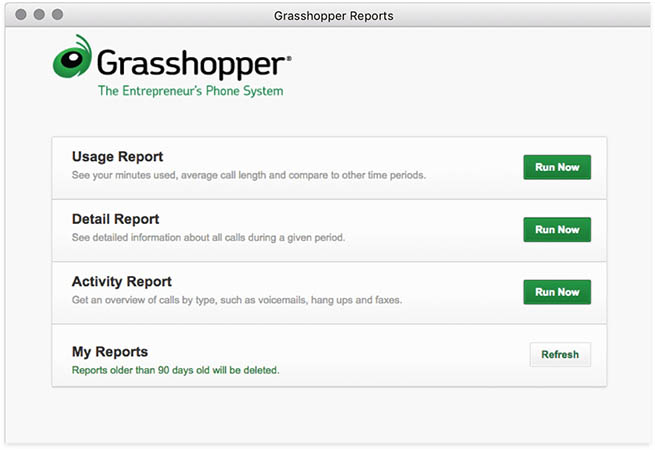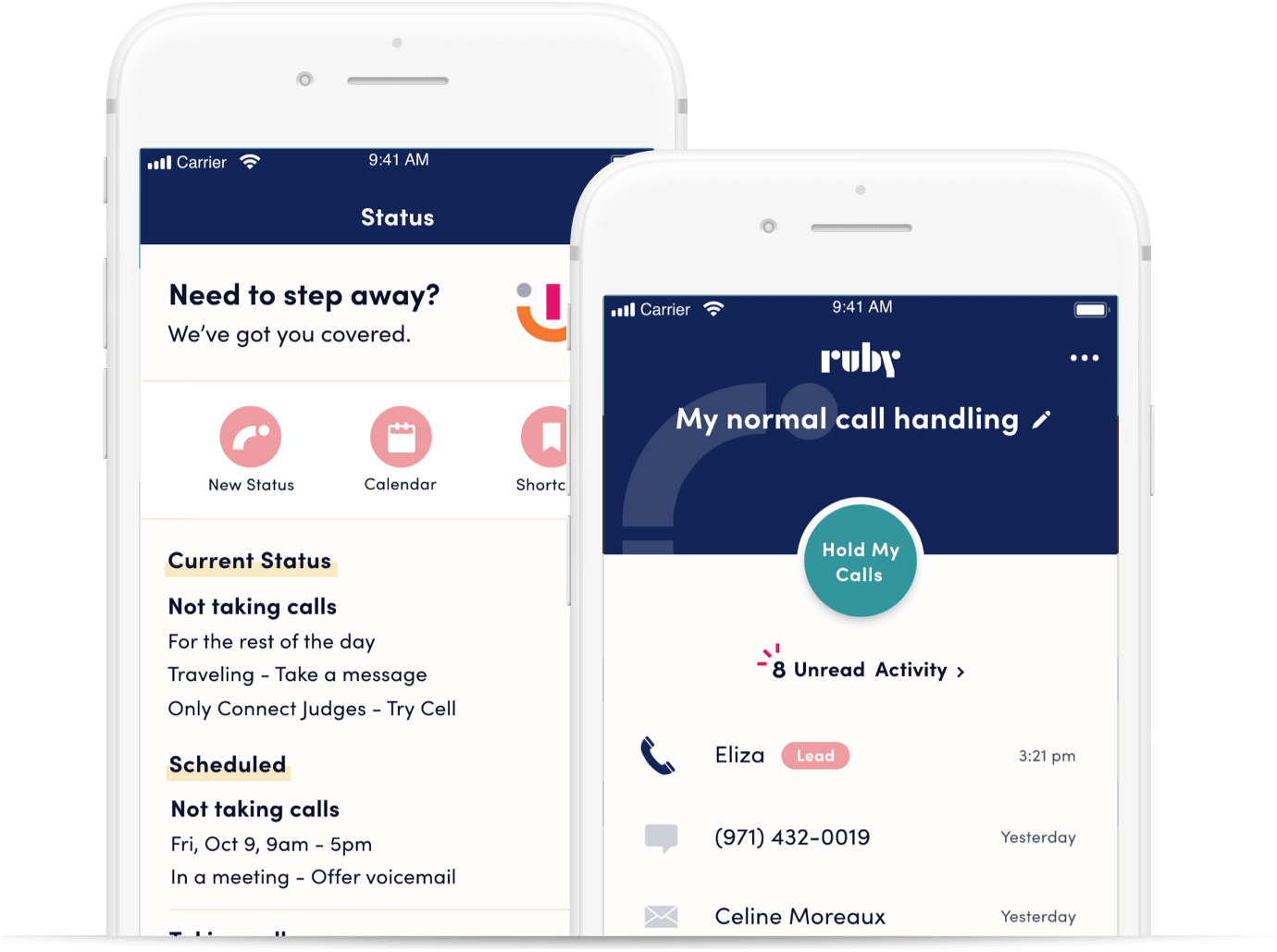Grasshopper and Google Voice are popular phone systems among small businesses requiring a budget-friendly, no-frills communications solution. Grasshopper’s affordability hinges on its flat rate pricing, while Google Voice boasts a forever-free plan. Both have basic voice-over-internet-protocol (VoIP) features, namely call forwarding, auto-attendant, and voicemail. For this Grasshopper vs Google Voice comparison guide, we discuss the providers’ differences in depth.
While Grasshopper and Google Voice offer affordable subscription plans and easy-to-use platforms, they have unique features that make them suitable for specific functions. Based on our comparison, the best use cases for the providers are as follows:
- Grasshopper: Better for companies that require multiple phone numbers for different customer service teams and foresee scaling support operations
- Google Voice: Better for budget-conscious solopreneurs and small businesses that want to make call management more efficient
While Grasshopper and Google Voice are strong virtual phone solutions, when you need a more unified communications solution, there are better options. Consider a unified communications as a service (UCaaS) provider instead:
- RingCentral: Best for businesses that need communications channels outside of a virtual phone system
Grasshopper vs Google Voice at a Glance
Monthly Starting Price | $34 for unlimited users* | $10 per user** |
Free Trial | 7 days | ✕ |
Number of Users | Unlimited | Unlimited (10 users for entry-level plan) |
Unlimited Domestic Calling | ✓ | ✓ |
Multi-level Auto-attendant | ✕ | ✓ |
Call Recording | ✕ | ✓ |
Virtual Fax | ✓ | ✕ |
Service Level Agreement (SLA) | 99.999% | 99.9% |
Data Security Compliance | Not available (N/A) | Health Insurance Portability and Accountability Act (HIPAA) |
For More Information |
*Pricing is based on monthly billing. Save over 10% with annual billing.
**The provider also offers a free version for one user.
Best Alternatives
If the head-to-head comparison above didn’t convince you to pick between Grasshopper vs Google Voice, explore other business phone systems. The best Google Voice and Grasshopper alternatives offer more advanced call management features, robust integrations, and flexible customization.
Here are some VoIP platforms worth considering:
- RingCentral: Best for companies requiring a wide range of call routing tools and third-party integrations to accommodate a high call volume. Its features include multi-level auto-attendant and interactive voice response (IVR), call queues, and call delegation. Its entry-level subscription plan costs $30 per user, monthly. To learn more about its packages and features, read our in-depth RingCentral review.
- Nextiva: This is a suitable VoIP solution for businesses needing a generous toll-free minute allowance to manage long-distance call expenses. Use business hours call routing, call recording and rating, and priority alerts to handle calls more efficiently. Its monthly starting price is $30.95 per user. Our Nextiva review should help you determine if the provider’s call management capabilities match your needs.
- Vonage: Choose this phone system if you prefer a customizable phone system to deal with fluctuating call volumes. Vonage’s notable capabilities include call rerouting, call announce, and smart numbers. The base-level subscription is priced at $19.99 per user, per month. Check out our Vonage review for more details.
Best for Pricing: Google Voice
|
|
*Pricing is based on monthly billing. Save over 10% with annual billing.
Grasshopper has released a True Solo plan that’s designed to provide solopreneurs with a virtual phone system, and it costs only $14 per month.
In terms of Grasshopper vs Google Voice pricing, the comparison isn’t apples to apples since Grasshopper offers a flat-rate model while Google Voice is on a per-user basis. However, when you simply consider the providers’ entry-level plan, Google Voice offers the most accessible. For only $10 per user, you’ll provide phone lines for up to 10 team members and use basic VoIP capabilities.
Moreover, Google Voice has a forever-free plan. Designed for solopreneurs, this free version only allows one user. To access the platform, you must create or sign in to your Google Workspace account.
Although Google Voice is cheaper than Grasshopper, Grasshopper is still a more budget-friendly option compared to other VoIP providers, like RingCentral and Nextiva. Its base-level subscription plan, priced at $34 per month, includes unlimited users sharing one phone number and three extensions. With the unlimited user offering, you’ll add as many team members as you want to your account at no additional cost.
Google Voice earned a high score for pricing in our Google Voice review. Read the guide to learn if this provider offers the best value for your money.
Best for Virtual Phone Numbers: Grasshopper
|
|
When comparing Grasshopper and Google Voice virtual phone numbers, Grasshopper has a more favorable offering because it supports various types of numbers: local, toll-free, and vanity. In contrast, Google Voice only offers local numbers.
Grasshopper also makes securing numbers easy with its number lookup tool. To obtain a local number, enter your chosen three-digit area code on the tool’s search bar, and a list of available phone numbers will appear. For vanity phone numbers, key in the letters or numbers you prefer, and the number lookup tool will generate results that closely match your desired number.

Use Grasshopper’s number lookup tool to secure business phone numbers. (Source: Grasshopper)
Aside from different phone numbers, Grasshopper doesn’t charge extra fees for number porting. In contrast, Google Voice requires a one-time fee of $20 when transferring a number from a different provider. If you need more business phone options, check our comprehensive buyer’s guide on the top Google Voice alternatives.
In our Grasshopper review, we assessed other features the provider offers. If you’re keen on adopting this VoIP solution, familiarize yourself with its unique capabilities.
Best for Call Management: Google Voice
|
|
To settle the Google Voice vs Grasshopper debate regarding call management, we compared each provider’s routing and monitoring capabilities. The platforms basically have the same features, but Google Voice has a slight edge because it has a few capabilities Grasshopper doesn’t have, including the multi-level auto-attendant. This feature enables users to create menus for different actions: speak to an agent, send to voicemail, and redirect calls to available team members.
It supports one-click dialing, helping agents place calls to phone numbers on web pages faster. Moreover, Google Voice allows automatic call recording, making documentation and agent performance evaluation easier.

Upload custom auto attendant greetings on Google Voice.
(Source: Google Workspace Updates)
Although Grasshopper doesn’t offer a multi-level auto-attendant, one-click dialing, and call recording, it still has essential VoIP capabilities small businesses find useful. These include call forwarding, transfer, and business hours routing, which are available across all subscription plans. If you want to explore other business phone systems with robust call management features, check out our list of small business VoIP services.
Best for Usage & Call Reporting: Grasshopper
|
|
When comparing Google Voice vs Grasshopper’s usage and call reporting, Grasshopper has more robust features than Grasshopper. Users are able to run three types of reports:
- Usage report: Shows the number of inbound and outbound minutes used and the average call length
- Detail report: Displays all relevant call information at a specific period, such as caller ID, connecting number, and extensions
- Activity report: Outlines details involving the use of voicemails, faxes, and calls

Run different Grasshopper reports based on what you need to evaluate. (Source: Grasshopper)
While Google Voice features a reporting tool as well, it’s only limited to key information on logged calls, including source, destination, and duration. To access this, check the Voice log events option on your Google Admin account. The dashboard lets you search call logs through attribute filters. These attribute options include call destination, call source, cost of calls, call date, call duration, desk phone model, and voicemail recipient.
Best for International Calling: Google Voice
|
|
For international calling, both Grasshopper and Google Voice charge calls per minute. The difference lies in the cost and accessibility. In a nutshell, Google Voice makes international calling more affordable and easier for small businesses. As long as you have enough calling credit and the $30-per-user subscription plan, you’ll be able to start making calls to overseas customers right away.
With Grasshopper, you must pay a deposit fee of $500 to place international calls. The provider deducts all charges from the deposit until it runs out. Aside from the high entry cost, you must at least have a 60-day-old account to activate international calling. For this reason, many businesses seeking to connect with global audiences are better off exploring Grasshopper alternatives.
Best for Scalability: Grasshopper
|
|
Grasshopper wins in the scalability category primarily because it offers unlimited users across all plans and the unlimited extensions feature in the highest-tier package. As you grow your customer service operations, you get to add team members and more departments to your account without incurring extra expenses. While Google Voice offers unlimited users, the feature isn’t available in its entry-level subscription plan.
As you upgrade subscription plans, you access multiple business phone numbers. This means you’ll be able to secure 1-800 or vanity numbers easily when you move from a purely local to a national customer base. As the customer service demand grows, you have the option to get live receptionist services from Ruby and add call blasting features to your Grasshopper phone system.
Both Grasshopper and Google Voice are compatible with iOS and Android devices. These support remote teams scaling operations.

Grasshopper allows users to get Ruby live receptionist services. (Source: Grasshopper)
Best for Uptime Guarantee: Grasshopper
|
|
As for SLA, Grasshopper outperforms Google Voice as it offers a 99.999% uptime guarantee, the gold standard of availability. This means the system only has over 26 seconds of downtime a month. In contrast, Google Voice has 99.9% SLA, which translates to a downtime of over 43 minutes a month or 10 minutes a week.
At a glance, it may seem like there’s not much of a difference between the five nines and three nines. However, when you look closely at the downtime figures, you’ll realize that losing 43 minutes a month negatively impacts customer service delivery and keeps agents from being productive.
Frequently Asked Questions (FAQs)
Yes. However, note that Google Voice doesn’t support all area codes and carriers. Before canceling your account with Grasshopper, check with Google Voice first if number porting is possible. Remember that you must pay $20 to facilitate the transfer process.
Yes. Grasshopper forwards calls to devices with valid phone numbers. Meanwhile, Google Voice offers desk phone support for select Poly models.
Aside from the U.S. and Canada, Google Voice is available in the following countries:
- Belgium
- Canada
- Denmark
- France
- Germany
- Ireland
- Italy
- Netherlands
- Portugal
- Spain
- Sweden
- Switzerland
- United Kingdom
How We Evaluated Grasshopper vs Google Voice
Grasshopper and Google Voice offer essential call management tools and affordable subscription plans for solopreneurs and small businesses. In assessing the platforms, we considered what companies prioritize, namely pricing, general features, and overall ease of use. We included in the evaluation our expert opinion on the provider’s value for money and popularity.
Here’s a complete breakdown of these factors:
- Pricing: To determine the platform’s affordability, we looked at the cost of the base-level and second-tier plans and compared it to the prevailing price of business phone systems. We checked if the provider offers annual and volume discounts, and a forever-free plan that benefits solopreneurs, startups, and small teams.
- General features: The general features we considered were unlimited calling in the U.S. and Canada and call management tools, such as call forwarding, ring groups, and call analytics. We checked if the provider offers a mobile app that supports remote work. Since businesses need a reliable communications platform, we included the SLA guarantee in our assessment.
- Ease of use: We evaluated ease of use by determining the expertise required to set up and operate the phone system. We also assessed if providers have an intuitive interface.
- Expert score: This includes our evaluation of the provider’s standout features, value for money, and ease of use. We checked user ratings in third-party review sites to gauge the platform’s popularity.
Bottom Line
Grasshopper and Google Voice suit companies looking for affordable business phone systems that enable efficient call routing without the bells and whistles. However, between the two, Grasshopper emerged superior as it won more rounds, namely in virtual phone numbers, usage and call reporting, scalability, and uptime guarantee.
On the other hand, businesses that need a budget-friendly platform for managing calls and connecting with an international audience will find Google Voice the more suitable option. Sign up for Grasshopper’s seven-day free trial or Google Voice’s free plan to discover which fits your needs.